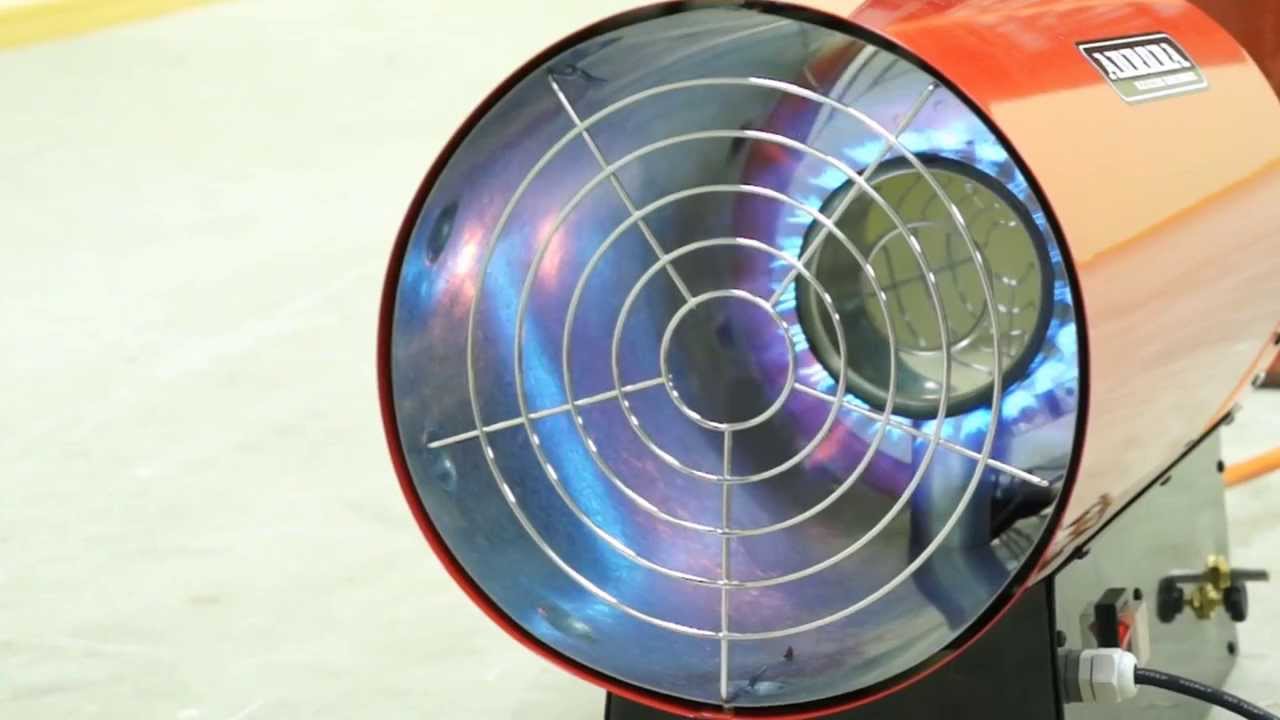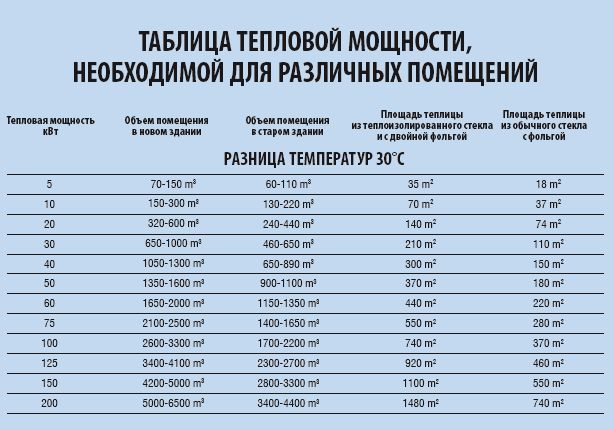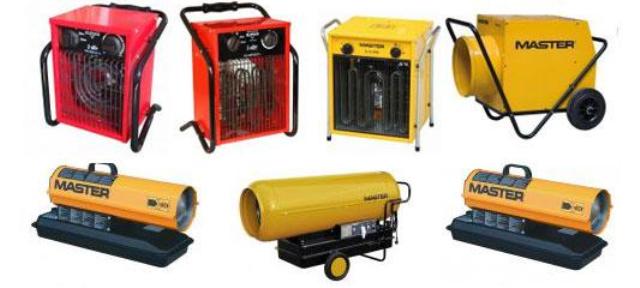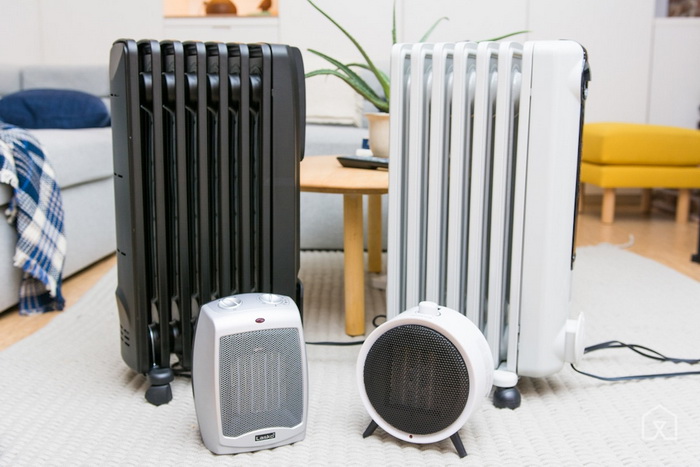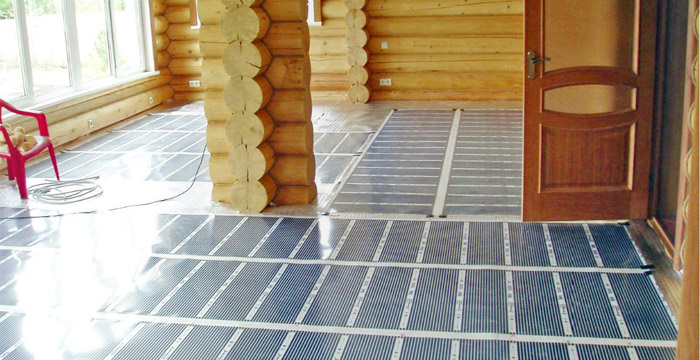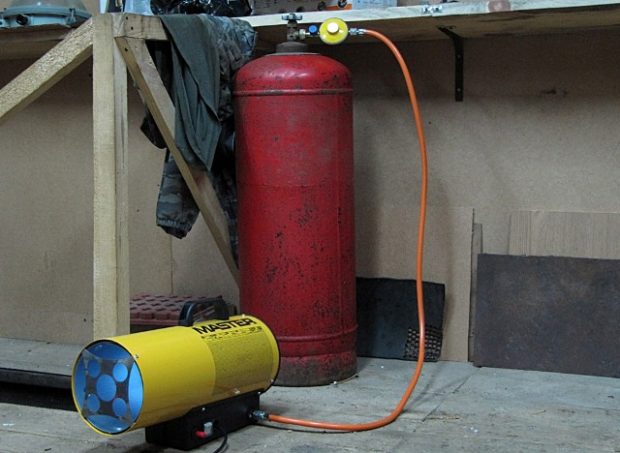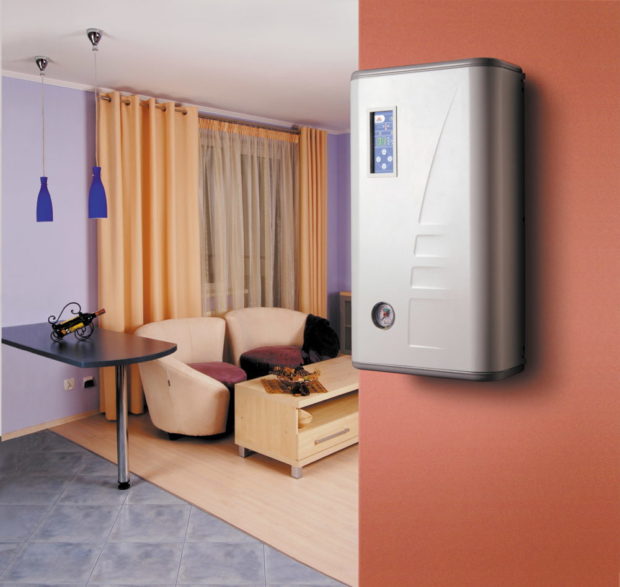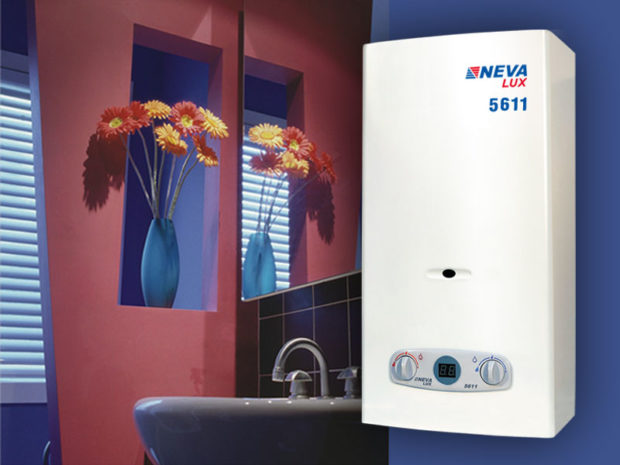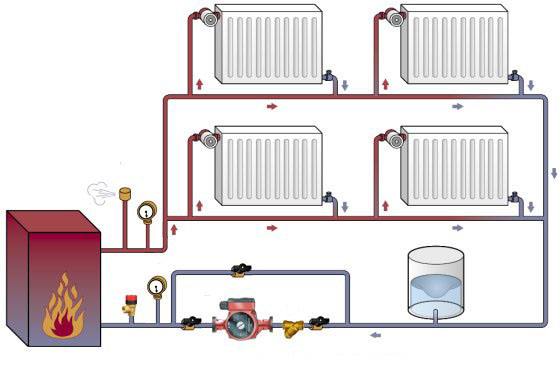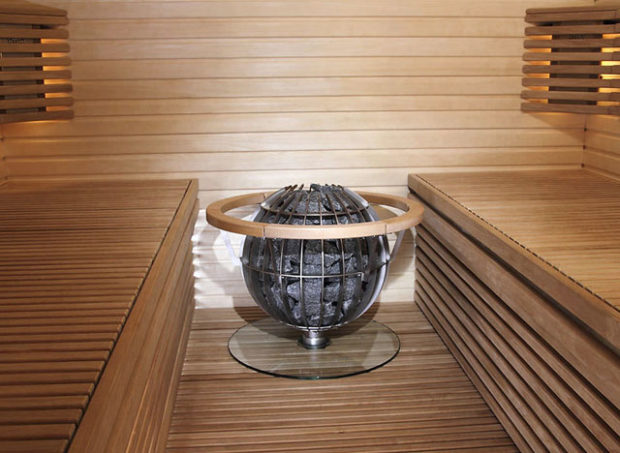10 tips on which heat gun is better to choose
By the speed of heating the air, heat guns are almost the most effective among all known to us. heaters. They are able to quickly warm up the garage or warehouse premises, they are used for heating private houses and summer cottages, when the main heating system can not cope. They warm the air in the greenhouses when the main source of heat has failed. They are used during repair and construction workwhen you need to quickly dry the finish and proceed to the next step. Cannons even warm cars during frost. There are many more situations where such equipment will be indispensable. But we must remember that for different cases, devices of different types will be required. We figure out which heat gun is better to choose, what types they are, what kind of fuel they work on, and what heat power is needed.
No. 1. The principle of operation of the heat gun
The heat gun can be considered a large and powerful heat fan, and the last one is probably familiar to all of us. The structure and principle of operation of the gun is quite simple. The body of the device is made of metal, which withstands both mechanical and thermal loads. There are devices in which the case has the shape of a parallelepiped, but often these are cylindrical devices. Actually, due to their appearance, the devices became known as guns - they look very much like an artillery gun.
The heart of the heat gun is heating element. This can be a heater, a spiral, a combustion chamber of liquid or gaseous fuel. Near the heating element there is a powerful fan that draws cold air through the holes in the housing and contributes to the rapid spread of already heated air. Here is such a simple mechanism. There are fanless models that heat surrounding objects according to the infrared principle.
Additionally, the device is equipped with a thermostat and a thermostat, which help maintain the set temperature in the room and prevent the device from overheating.
Heat guns can be classified according to several criteria, but the most important difference is type of fuel used. On this basis, heat guns are:
- electric;
- gas;
- diesel;
- multi-fuel;
- infrared.
Of course, even guns differ in size, power and other parameters, but the very first criterion for choosing is precisely the type of fuel, so let's start with it.
No. 2. Electric heat guns
These are the most versatile and easy to operate devices. Here, a spiral of refractory metal or a sealed TEN tube is responsible for heating the air. The second option is considered more preferable due to its higher durability and safety. As soon as you plug the cannon into a power outlet and set the temperature for heating the air, the fan starts to pump air to the spiral or heater. A stream of warm air comes out of the device, and the room warms up instantly. The user can set the maximum permissible heating temperature with the temperature regulator. When it is reached, the heating will turn off, but the fan will continue to work.
Electricity in such guns is spent on heating the heating element and on the rotation of the fan blades. Thermal power fluctuates from 1.5 to 50 kW. Devices with power up to 5 kW can be connected to a conventional power supply and can be used even at home. Most products are equipped with a handle for convenient transportation of the device and wheels for greater mobility.
Benefits:
- environmental friendliness. Electric heat guns can be used even in residential unventilated rooms, since there are no combustion products;
- universality. Products suitable for heating garages, car repair shops, warehouses, greenhouses, cottages, houses, shops, train stations, etc .;
- easy start-up at low temperatures, when, for example, liquid-fuel analogs require long-term efforts;
- the duration of continuous operation and the lack of the need for refueling with gas or diesel;
- ease of operation. It’s enough to buy a device and put it in the right place, equip the chimney and you won’t have to buy gas cylinders;
- security.
Minuses:
- electricity is more expensive than gas and diesel, so this type of heating will cost a pretty penny;
- if you need to use a high power gun, you need to have a 380 V network connection and confidence that there is no region power outages.
The electric gun is excellent for quickly heating the cottage, warehouse, office, greenhouse and other premises. As a rule, electrical appliances are used as an additional or backup heat source due to the high cost of operation, but there are exceptions.
No. 3. Gas heat guns
Gas devices are equipped with a burner with openings through which gas passes into the combustion chamber. When the fuel burns out, heat is released that heats the walls of the heat exchanger. The fan, as in electric guns, pumps air to the heat exchanger, releasing it from the gun already in the heated state. The fan works from the mains, so connection to the outlet is still required, but the power consumption will be some 30-200 watts, so this way of heating will hardly affect the electricity bills.
The gas heat gun can operate on a liquefied gas cylinder or can be connected to a gas network. Ignition is manual or automated.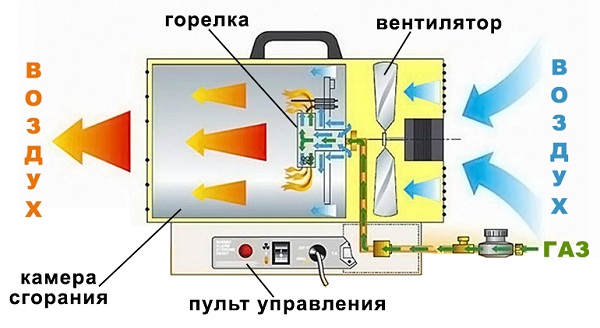
Benefits:
- profitability in operation;
- high efficiency;
- fast heating of large areas and even distribution of heat;
- Numerous mechanisms are provided for user safety, including overheat protection, flame control system, etc.
Minuses:
- even despite all the safety mechanisms, a gas heat gun is more dangerous than an electric one. When burning, oxygen is used, and if the room is not equipped with normal ventilation, the accumulation of combustion products and a decrease in the amount of oxygen will lead to sad consequences, so get ready to ventilate the room at least occasionally, or organize good ventilation;
- connection to the gas pipeline or constant change of gas cylinders is required.

These shortcomings fade over the main advantage of gas guns - the low cost of operation. Devices of this type are usually used for heating large rooms: warehouses, workshops, industries, hangars. Often, gas guns are used at construction sites when it is necessary for mortars to dry quickly or gain strength, and the room is cool and damp. However, small construction teams and private craftsmen do not have to go broke to buy their own equipment - in the cold season, to increase the efficiency of construction, installation and repair work, you can rent a heat gun. In Krasnodar, this service is provided by the company LLC Professional, which since 2005 has been selling and leasing construction equipment.
Number 4. Diesel heat guns
Diesel guns, as the name implies, use diesel as fuel.The design of these devices may vary. Distinguish:
- diesel guns of direct heating. They warm up the room faster, since the injected air passes through the combustion chamber. This also implies a minus - along with the heat, combustion products also enter the room. If people are constantly in the room, then such heating is clearly not suitable. This is a good option for heating in the open air, for example, when you need to warm up the car, carry out some construction work on the street, etc .;
- indirect heating diesel guns. In this case, the fuel, by burning, heats the walls of the chamber, and they already heat the air, which is drawn in by the fan. The combustion products from the chamber are discharged through a chimney. This design is safer, but its efficiency is lower.
Otherwise, all diesel guns are designed identically. There is a fan, a combustion chamber and a fuel tank. The latter serves as a container for fuel, from there it is pumped into the combustion chamber. The fuel-air mixture ignites in the burner due to piezo ignition.
Benefits:
- low cost of operation;
- the ability to heat large areas;
- devices with a flame control system and a timer can be left unattended.
Minuses:
- the need to monitor the fuel level and constantly add fuel;
- the need to provide a chimney or use the device only in an open space;
- over time, the metal in the area near the burner may burn out, so pay attention to the thickness of the metal when buying.
Of course, diesel guns are not suitable for residential and public buildings. These are, as a rule, large installations that are used to heat warehouses, hangars, production facilities, and open construction sites.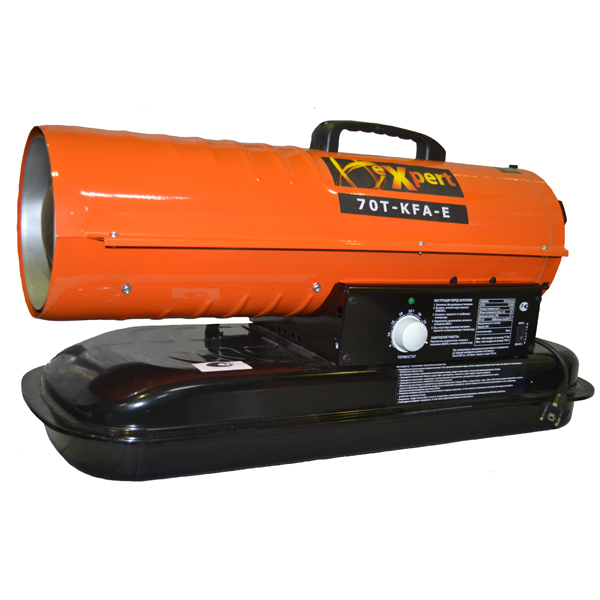
No. 5. Infrared heat guns
All the heat guns we examined earlier have one thing in common - the presence of a fan. It is he who helps to efficiently distribute heat throughout the room. Infrared devices work very differently. They do not have a fan, and heating is carried out due to the fact that the device uses infrared rays to heat the surfaces in the room (floor, walls, furniture), and they, in turn, heat the air. By the same principle the sun “works”. It turns out that the air warms up much more slowly, but people and objects in the radiation zone heat up in the first minutes after turning on the device.
It is used as fuel diesel or kerosene. Fuel burns out, heats special tubular heating elements, which tend to emit infrared rays with increasing temperature. To prevent the elements of the housing from heating up, a mirror surface is located behind the heating element. Infrared heat guns are used when spot heating is needed.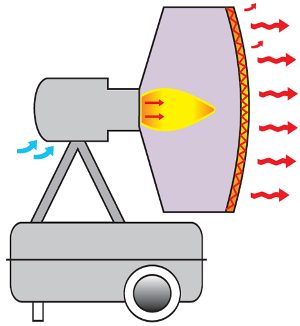
Benefits:
- fast heating of people and objects in the radiation area;
- almost complete absence of noise, since there is no fan in the design;
- the ability to work both outdoors and indoors;
- safety and mobility;
- Efficiency up to 95%.
Among cons you can note the cost of equipment and all the same spot heating - quickly warm up the room, as it does, for example, a gas gun, it will not work. This is an excellent solution for rooms with poor thermal insulation, for heating sites on the street, as well as for repair work.
No. 6. Multi-fuel heat guns
Such devices are similar in principle to diesel guns, can be direct and indirect heating. An important difference is omnivore. You can fill in the fuel tank diesel or kerosene, and some samples are even able to burn used oil. Such guns are a real find for car services, where a sufficient amount of spent liquids accumulates. They can be disposed of while receiving heat. The disadvantages are the same as that of diesel devices, and even more advantages, given the ability to work on different types of fuel.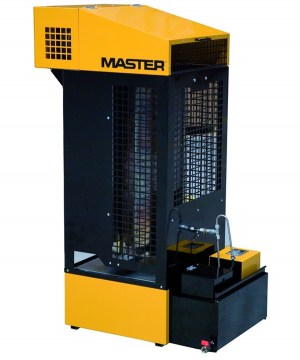
Number 7. Thermal power and its calculation
How to compare several different devices for work efficiency? How to understand that one device is designed for heating small garages, and the other can easily warm up a huge warehouse? We need to look at the power indicator, and this is not about the consumed electric power, or rather not always about it. This parameter will be indicative only for electric models. So let's start with them.
The power of electric guns ranges from 1 to 50 kW. Models of 1-3 kW and cannons can hardly be called guns - these are, rather, fan heaters. Again, appliances with a power of up to 5 kW can be included in a 220 V network. All that’s more is equipment requiring a 380 V network. The most powerful electric guns are devices up to 100 kW.
The power of gas appliances ranges from 10 to 150 kW, but more powerful devices are often found. Diesel and multi-fuel direct heating devices produce all 220 kW, but their analogues of indirect heating are less powerful - a maximum of 100 kW. Infrared guns are rarely more powerful than 50 kW.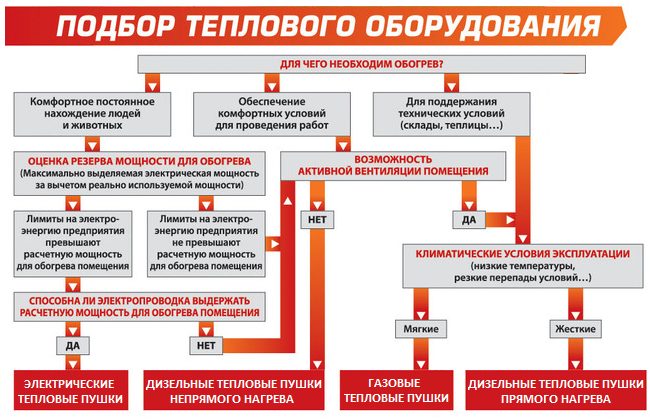
How to understand what power is needed? Many advise using the approximate method of counting, according to which at 1 m2 the premises are enough 1-1.3 kW of power. If the room is low and well insulated, you can multiply by 1 kW, and if there are problems with thermal insulation, then it is better to take the coefficient with a margin.
If you want to get a more accurate result, then arm yourself with a calculator and the following calculation procedure:
- calculate the volume of the room, since this parameter is much more important than the area parameter. If you take a room of 90 m2 and imagine that the height of the ceilings in it is 4 m, then the volume will be 360 m3;
- temperature difference between the desired indoor indicator (e.g. +180C) and an indicator outside the walls. On the street in winter, the weather can be different. Usually it is recommended to take into account the average winter temperature, making allowance for possible frosts. If the gun is the main source of heat, it is best to consider the lowest winter temperature. If you are making a calculation for a residential building, then choose a comfortable internal temperature yourself. For warehouses, the accepted temperature is +120C, for public buildings - +180C. So, let's say that in winter there are often frosts down to -200C, and inside it is necessary to maintain the temperature +180C, then the difference will be 380FROM;

- room insulation plays an important role. A special factor is taken into account when calculating the power of the gun. If all the walls, floor and roof are insulated, the number of windows is small, they have double frames, then k = 0.6-1. If the walls are brick, but without insulation, the roof is standard, and the windows are average, then k = 1-2. For structures with a single brick wall, single window frames (garages, for example) apply the coefficient k = 2-3. For open and half-open areas, simplified wooden and metal structures without thermal insulation k = 3-4. Suppose we have a garage with double brick walls without thermal insulation, which visitors will visit more or less often, then we assume that k = 1.8;

- thermal power is calculated by the formula Q = k * V * T. Then we get Q = 1.8 * 360 * 38 = 24 624 kcal / h, and since in 1 kW it is 860 kcal / h, it turns out that Q = 24624/860 = 28.6 kW;
- if the gun is not the only source of heat in the room, then it is necessary to take this into account and subtract from the final result the capacity of the existing equipment;
- You can take not one gun of high power, but a few smaller ones, in order to eventually get the necessary power. If the room has a complex configuration, then several less powerful guns are even better than one more powerful one.
Number 8. Other specifications
To evaluate whether this or that equipment suits you, it is necessary to analyze a number of some additional parameters:
- air flow, m3/hour. The indicator indicates how well the fan works.Ideally, it should be powerful enough to quickly warm the air around it and prevent air overheating directly near the gun. The value of the air flow is the volume of warm air that the device can generate in 1 hour of operation. The higher the power of the gun, the greater the air flow. The indicator ranges from 100-150 to 800 or more m3/hour;
- the length of the air stream, m This indicator also depends on the power of the fan and makes it clear how far the device can send an air stream;
- fuel consumption, kg / h or l / h helps evaluate the efficiency of the device. The parameter makes sense to compare at the same power samples;
- noise operation, dB. All guns that work thanks to the fan are noisy. The higher the power, the higher the noise level. If compact electric guns give out only 40-50 dB, then large gas and diesel can give 80-90 dB, which will interfere in a small room. If the noise level is a critical indicator, then it is better to leave the choice on the infrared model;
- duration of work. If the gun is the only source of heat, it is important that it can work almost around the clock. In the description of the model you can see something like this 24/1 or 24/2. This means that the device can rest for 1-2 hours per day.

No. 9. Dimensions of the heat gun
The higher the power of the gun, the larger it will be, which is not surprising. The most compact and mobile are electrical appliances. Households weigh from 3 to 5-7 kg, and some industrial ones reach 30 kg. Thanks to the wheels and the handle, such devices can be easily moved; the only limitation is the length of the wire.
Gas guns are also relatively compact and lightweight, and if the source of fuel for them is bottled gas, then mobility will be all right. If you use main gas, then any gun will become stationary for some time.
Diesel and multi-fuel guns are considered the most dimensional, since they also provide a fuel tank. When it is completely filled with liquid fuel, the weight of the device increases. Moving a heavy liquid fuel cannon is not easy, and if an indirectly heated machine is selected, then you can’t move the appliance at all, because it is connected to the chimney.
In special cases, giant heat guns are used, the weight of which is calculated in tons. Naturally, such equipment is stationary, since even special transport is required for its transportation. It is used mainly at production sites.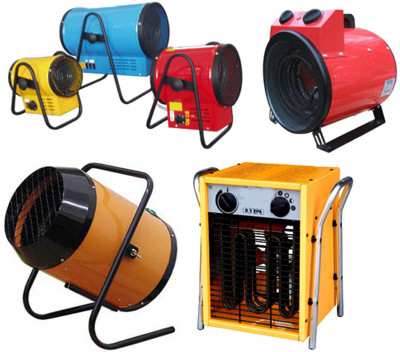
No. 10. Popular manufacturers
It may seem that the heat gun is an extremely simple mechanism that cannot be done poorly. Drive away such thoughts. Both electric, gas and liquid fuel models are sophisticated equipment, the safety of which depends on the quality of production, not to mention the heating efficiency.
Among the largest manufacturers of heat guns, we note:
- Ballu is a world famous manufacturer, produces electric, diesel and gas guns of various capacities and purposes (domestic and industrial). These are devices thought out to the smallest detail, the safety and effectiveness of which can be no doubt;
- FUBAG - German equipment running on diesel and gas. The manufacturer pays attention to little things, so the output is high-quality products in all respects;
- Master - guns of the highest quality. There are products that can work on electricity, diesel, gas, waste oil, as well as infrared devices.
- Timberk specializes in electric heat guns, which are more economical than many other manufacturers;
- Elitech - gas, electric and diesel guns of various capacities, from mobile household models to huge production ones;
- Resanta - domestic gas, diesel and electric guns, which have proved themselves to be of high quality and reasonable prices.

Other manufacturers include Inforce, Hyundai, Gigant, Sturm and NeoClima.
Finally, we note that it is worth buying a gun if it is supposed to be constantly used. If the equipment is necessary only temporarily for construction work or at the time of repair of the failed main equipment, then it is more logical to use rental services.

